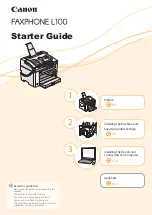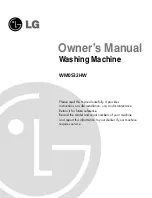
1-7
1
SETTING UP
Loading paper
Paper guidelines _______________________________
• Be sure to load paper of the correct size, weight, and quantity recommended for your fax
(see pp. 3-1, S-1).
• Store all paper wrapped and on a flat surface until ready to use. Keep opened packs in their
original packaging, in a cool, dry location.
• Store paper at 18°–24°C, 40%–60% relative humidity.
• To avoid paper jams and poor print quality, do not print on damp, curled, wrinkled, or torn paper.
• Use cut-sheet paper only, not paper that comes on a roll.
• Use only paper that has a thickness of between 0.08 and 0.13 mm. Thick paper may damage the
BJ cartridge print head.
• Do not load paper beyond the paper limit mark (
P
) or beyond the tab on the paper guide. Doing so
may cause problems. Also, make sure there are no gaps on either side of the paper stack.
• Let the paper run out before refilling the multi-purpose tray. Avoid mixing new stock with paper
already loaded.
• Do not leave paper stacked in the multi-purpose tray for long periods of time since it may bend or
curl and cause problems.
• Certain environmental conditions, such as extreme temperatures or humidity, can cause some
paper to misfeed in the multi-purpose tray. If you have trouble, feed one sheet at a time.
• Depending on the density of the printed pages, the ink may need time to dry. Within two or three
seconds, the ink becomes smudge-resistant. After drying for several minutes, the ink becomes
water-resistant.
• If your printed page contains a large amount of graphics, the ink on the page may be damp due to
the print density. Leave the page for 30 to 60 seconds to allow the ink to dry. Then remove the
page carefully without touching any surfaces.
• If paper curls after printing, remove it immediately; otherwise paper jams may occur.
• The platen (a roller inside the fax) may become inked if you print data beyond the width of the
page. If this happens, clean inside the fax (see p. 9-3).
Tab
Paper limit mark
No gaps here
















































